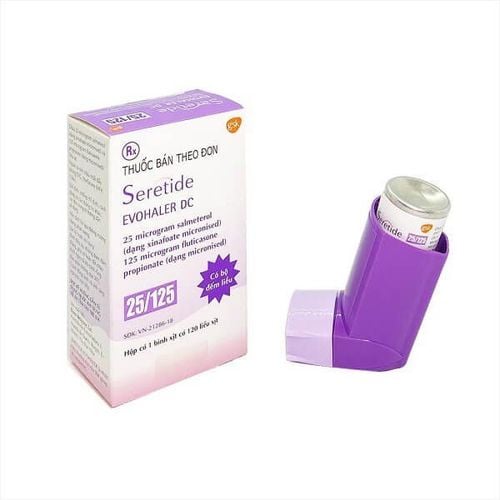Normally, the pleural cavity always contains about 20 ml of clear or pale yellow physiological fluid. When there is an excessive amount of fluid, it is called a pleural effusion. Of the causes of this condition, red or bloody pleural fluid is often associated with trauma. Less common causes of red pleural effusion are tuberculosis, aortic dissection, ruptured aortic aneurysm, and malignancy.
1. What is pleural effusion?
The pleural space is located between the chest wall and the lungs, and usually contains a small amount of fluid, allowing these two spaces to communicate. Pleural effusions form when there is an imbalance between fluid production and absorption in the pleural space. Fluid enters the pleural space by osmosis from the normal pulmonary and venous circulation, or by direct leakage from damaged vessels in the venous and pulmonary circulatory systems. While the pulmonary lymphatic system is responsible for absorbing this fluid, it can only absorb a small volume of fluid. Fluid tends to accumulate first in the interstitial space and then in the pleural space.
In other words, a pleural effusion is an abnormal accumulation of pleural fluid in the pleural space. The most common cause of pleural effusion is congestive heart failure, which tends to have a better prognosis, compared with less common causes of pleural effusion related to cirrhosis or malignancy.
When there is pleural effusion, the patient needs to be aspirated to diagnose through biochemical, bacteriological, cytological tests. In addition, there are other imaging tools that also help diagnose pleural effusion such as ultrasound, chest CT or chest MRI, pulmonary capillary ventilation perfusion scan.
However, in practice, as soon as the pleural fluid is drained, there are a number of characteristic features that can help determine the cause, examples include:
- Red pleural fluid: malignancy, pancreatitis , pulmonary embolism, tuberculosis
- Amber pleural fluid: tuberculosis
- Reddish brown pleural fluid: bacterial liver abscess
- Yellowish or whitish pleural fluid, pus: infection
- Black pleural fluid: aspergillus infection
- Highly viscous pleural fluid: mesothelioma
- Bad-smelling and purulent pleural fluid: lung infection or abscess
2. What is the red pleural fluid?
Pleural fluid when punctured with a needle, especially when drained by thoracoscopy, often contains blood. Accordingly, this is a predisposition that can explain the cause of red pleural effusion. At this point, measuring the hematocrit in the pleural fluid, on the same principle as the blood test, can help in the diagnostic evaluation of the red pulmonary fluid.
In the case of red lung fluid with hematocrit or greater than or equal to 50% of the peripheral blood hematocrit value is called hemothorax; however, 25-50% lower hematocrit of pleural fluid can be seen with hemodilution in the case of long-standing hemothorax. Conversely, if the hematocrit is less than 5%, the presence of blood in the pleural fluid causing red pleural fluid or red-brown pleural fluid is usually not diagnostic.
In the case of bloody pleural fluid with a red blood cell count greater than 100,000 cells/μl is called hemorrhagic effusion. When excluding trauma, the presence of hemorrhagic pleural effusion is usually due to malignancy, pulmonary embolism with pulmonary infarction, benign asbestosis, or post-traumatic cardiac syndrome.

3. Classification of causes of red pleural fluid
Red pleural fluid or hemorrhagic hemothorax occurs due to traumatic, ischemic or non-traumatic causes:
Due to trauma: in cases of penetrating chest trauma
Due to procedure:
- Pleural procedures (thoracotomy, thoracotomy, pleural biopsy)
- Cardiothoracic surgery
- A central venous catheter or extravascular displacement of a central venous catheter
Non-traumatic causes:
- Malignant disease
- Pulmonary embolism and infarction
- Anticoagulation therapy Visceral bleeding
- Spontaneous hemothorax Aortic dissection or rupture
- Rupture or dissection of mammary aneurysm in
- Post-cardiac trauma syndrome infectious diseases such as dengue hemorrhagic fever, pulmonary tuberculosis
- Endometriosis in the chest
- Vascular and connective tissue malformations
- Extramedullary hematopoiesis
- Congenital diseases: such as Ehlers-Danlos symptoms, neurofibromatosis, hereditary hemorrhagic telangiectasia (HHT.
4. Symptoms of red pleural fluid
The symptoms presented by patients with hemorrhagic pleural effusion and other causes of red pleural effusion are variable, depending on the underlying cause of the intrapleural bleeding and the rate at which it accumulates and how pleural blood.
- Symptoms of the underlying etiology, such as chest pain in patients with chest trauma, are the most common of the clinical manifestations.
- In contrast, drained patients with red non-traumatic pleural fluid often present with progressive dyspnea with a variable onset that depends on the rate of accumulation and volume of pleural fluid. Some patients may present with pleuritic chest pain.
- In cases where the patient experiences a red pleural effusion due to trauma, the nature of the fluid can rapidly become 3-4 liters of blood, causing hypotension and other signs of hemorrhagic shock such as shock, dizziness, pale skin, rapid pulse, cold hands and feet.
Prompt intervention is needed to identify and treat the cause of red pleural effusion, especially in cases involving severe trauma or malignancy.

5. How should a patient with a red pleural effusion be managed?
The treatment of choice for cases of red pleural effusion, specifically hemothorax, is immediate placement of a chest tube with a large bore (size 28F to 36F).
- The placement of a chest tube allows complete aspiration of blood from the pleural space, stops bleeding from pleural lacerations, allows quantification of bleeding, and reduces the incidence of subsequent edema, as the retained blood products are good culture environment, eliminating pleural blood and reducing the risk of fibrosis. The chest tube should be withdrawn when bleeding has been controlled with less than 50 mL of pleural fluid within six hours.
- Immediate thoracotomy is indicated for cases where the red pleural fluid is due to trauma causing massive bleeding, as determined by initial chest tube drainage greater than 1500 mL or Persistent pleural hemorrhage above 200 mL/hr for several hours, suspected aortic or cardiac trauma, deep chest wound, or large tracheobronchial leak.
Patients on anticoagulation therapy should have their coagulation function adjusted to normalize their coagulopathy. Other bleeding risk factors should also be reversed.
If the cause of the red pleural fluid is not trauma, further treatment will depend on the underlying cause, such as tuberculosis or cancer.
6. Is the red pleural fluid dangerous?
Red pleural fluid due to trauma or hemothorax can result in hypovolemia and hypovolemic shock, blood clot formation, increased likelihood of pneumonia, lung abscess.
If the cause of the red pleural fluid is not traumatic such as tuberculosis or malignancy, the patient may experience short-term and long-term prognosis depending on the situation.
In summary, red pleural fluid is a complex condition. Because there are many different causes of red pleural effusion, the patient needs to be actively stopped bleeding locally, if trauma causes hemothorax, or find and treat according to the underlying disease. Prolonged presence of blood in the pleural space can cause deterioration of lung function; On the other hand, red lung fluid suggests diseases that, if not controlled in time, can delay and adversely affect the patient's prognosis in the future.
Best when infected with red pleural fluid, patients should go to medical facilities to be checked by a doctor for appropriate treatment.
Vinmec International General Hospital is one of the hospitals that not only ensures professional quality with a team of leading medical doctors, modern equipment and technology, but also stands out for its examination and consultation services. comprehensive and professional medical consultation and treatment; civilized, polite, safe and sterile medical examination and treatment space.
To schedule an appointment at the hospital, please get in touch with the HOTLINE or book directly HERE. Download the MyVinmec App to manage, track, and schedule appointments conveniently anytime, anywhere.













